Some people get the one amazing lens and spend years learning how to use it to its maximum potential. Others carefully plan out their lens purchases, making sure they get the best tools for different scenarios. And then there are people like me, slowly gathering an unreasonable range of cheap and often questionable lenses. Not really caring if they will have any real use for them or how does it make sense to have five different 35mm lenses for the same mount. So, when a friend offered me his bundle of random C-Mount lenses, of course I was more than happy to add them to my collection.
C-Mount lenses – What are they and how to use them?
Production of C-Mount lenses started almost 100 years ago, when they were introduced for 16mm Bell & Howell movie cameras. Over the following decades they spread to a wide range of other movie formats and even nowadays you can find them on CCTV or industrial cameras. This gives everybody access to a deep pool of options, ranging from some proper vintage pieces to modern cheap offerings from China. And many of them look quite tempting, combining a fast glass with surprisingly compact dimensions.
Designed for a simple screw mount and a short flange distance (17.5mm), C-Mount lenses are perfect candidates for adapting onto mirrorless digital cameras. Just head over to Amazon or eBay to find adapters for most of the mounts, only few dollars each. I personally appreciate how thin and light these adapters are, much better than to drag around massive adapters for old SLR lenses.
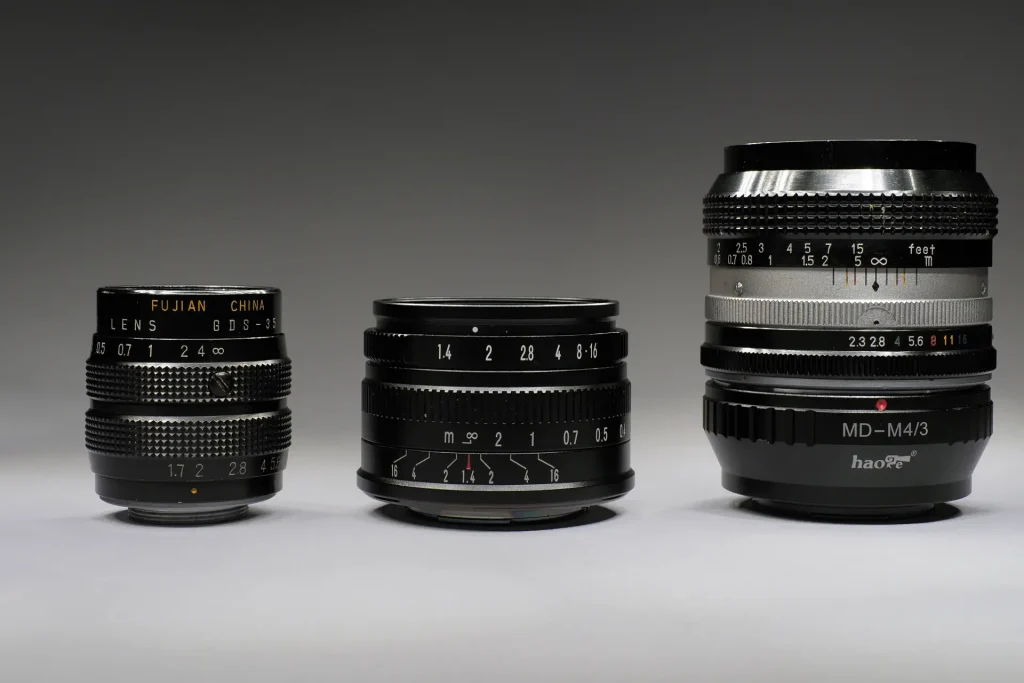
But before you go bidding on random C-Mount lenses on eBay, we need to talk about the sensor coverage. Since these lenses were made for 16mm or smaller formats, they will cause a heavy hard vignetting on many of modern cameras. Full frame is pretty much out of question without additional cropping or digital zoom. Also APS-C models will be quite limited, matching only few lenses designed for the biggest C-Mount formats and only at certain focal lengths. The choice gets bit better on the Micro Four Thirds and it improves further on now discontinued Pentax Q or Nikon 1 cameras. Best advice would be to always check for which format was the given C-Mount lens designed and if anybody else had any luck pairing it with mirrorless cameras.
Small interesting side note: Raspberry Pi picked C-Mount for their latest camera module, as it perfectly fits their tiny Sony sensor. You can learn more about it here.
Currently I own four C-Mount lenses and I’m using them adapted to Micro Four Thirds cameras, mostly on my favourite Panasonic GF1. Three of them cover the sensor without issues and I will talk further about them in this article. The last one is a 2.8 – 12mm zoom designed for the 1/3-inch format and as you can guess, it has a bit of vignette…
Fujian 35mm F1.7 TV Lens
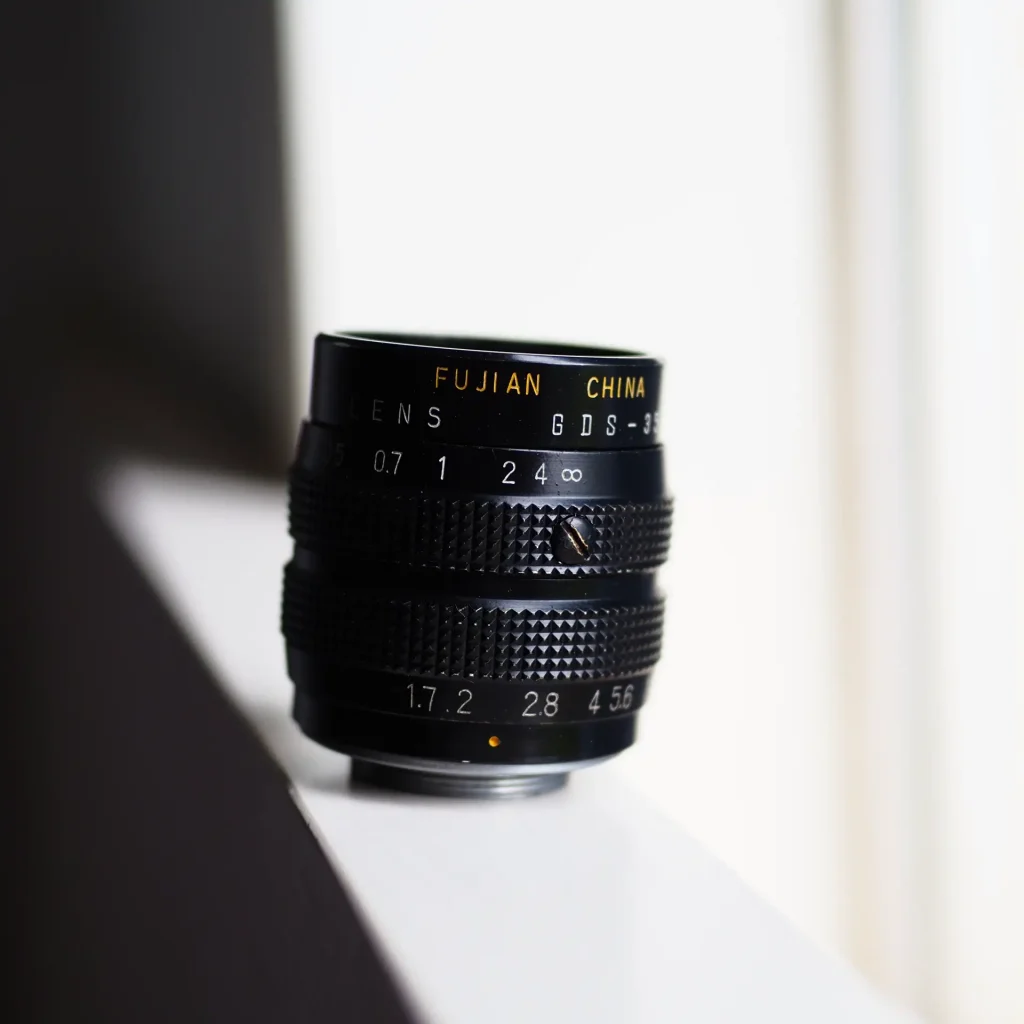
Probably the most well-known modern C-Mount lens, coming from one of the biggest Chinese OEM manufacturers. With a cheaper metal build, but at least offering basic F-stop and focus distance markings. Easily available online at prices under 30 USD, with a matching adapter included. On M43 camera acting like a 70mm equivalent.
At the beginning, I was so excited to use this lens, because I simply love its size. It’s so tiny, it seems out of place even on my small M43 cameras, kind of like a shrink down Leica M. And yet the controls are still easily manageable, using it was so much fun and for the first few days I kept it on my camera as main daily walkaround lens. But then I quickly learned that this lens is a much more “specialized” tool and need to be treated as such.

The main deal of Fujian lens is an extreme field curvature. This will work great when taking portraits or close-ups, especially as the lens also offers a very unique and swirly bokeh. Which is being helped further by the 12 aperture blades. But try it with anything else and the results will be a bit awkward. Simple snapshots, landscapes, street photography, etc, all of them coming out with a decently sharp center and heavily out of focus edges of the frame, even when significantly stopped down. Definitely a distinctive look, just a tiny bit complicated to use properly.

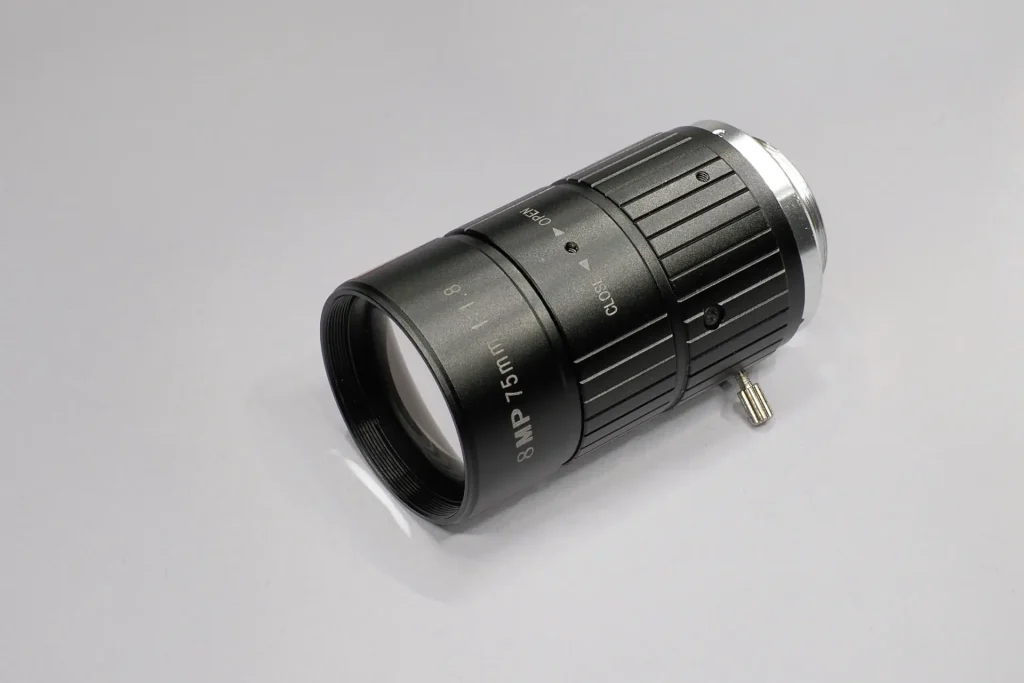
Generic 75mm F1.8 CCTV Lens
Chinese made lens, available from multiple brands, at prices around 45 USD. Its stated F-stop is a bit questionable, as it measures like T2.8 lens and some sellers are selling it as a F2.8 lens. Kind of a typical example of the CCTV lens, as it lacks any markings for focus distance or F-stops. I tried to compensate for this by simply adding few stickers to my lens.
This became my most used C-Mount lens. Offering a great reach of 150mm equivalent lens in a very compact and light package, small enough to carry it with me every day to office. Giving me quite a lot of nice images, with decent sharpness and contrast, without any deal breaking optical flaws. There is nothing better than to quickly throw it on my camera in these fleeting moments to capture a sunset over the port, foggy mountains on other side of the valley or just some lovely architecture shots at sunrise.
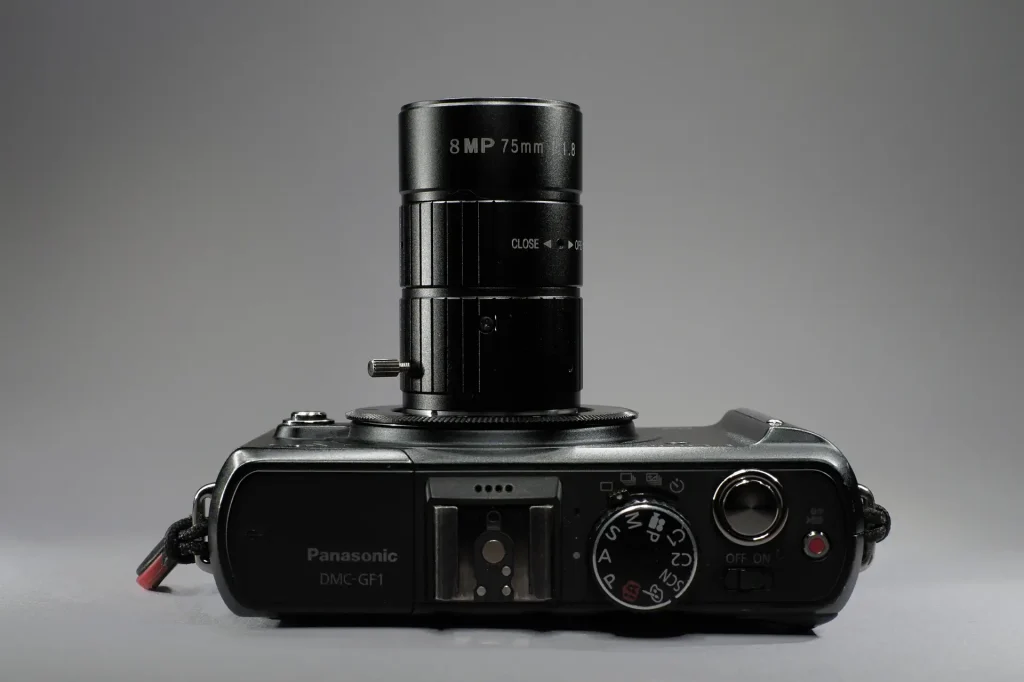
I’m facing only one issue with it, the minimum focus distance. The focus throw on this lens is super long, about 630°, yet only about last 90° are usable with my adapter. This results in a minimum focus distance around 4 meters, which is why all the examples above are long distance shots. I hope that this can be slightly improved with some shims, but meanwhile I’m more than happy with this lens for my landscapes and architecture.


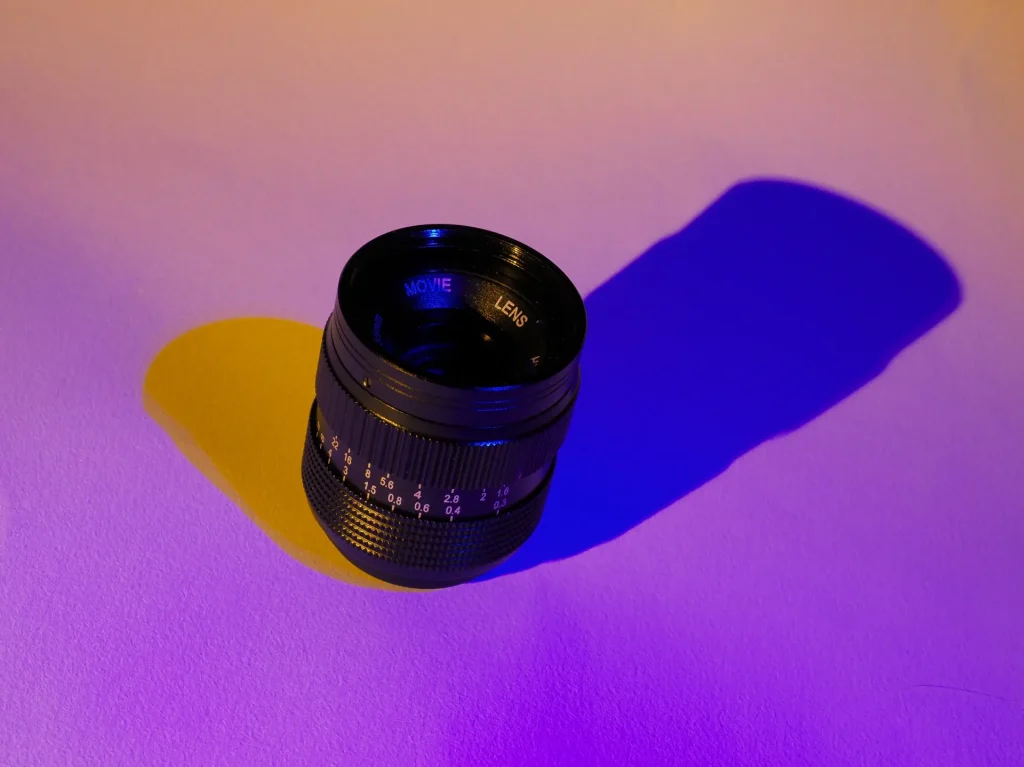
Horus Bennu 35mm F1.6
Trying to find any details about this lens got really tricky. There is just one Korean website talking about this lens, otherwise I have no idea where did it came from, if it’s still available or what was the original price.
This lens is quite a significant departure from the Fujian example. Horus Bennu also offers a 12 bladed aperture, but with a much better optical performance, even if a bit normal and boring. However, it’s all packed to surprisingly big and heavy lens, at least for the C-Mount standards. Apparently, it was marketed for use on APS-C cameras, so it’s possible it was optimized for a bigger sensor. And while that might have been acceptable in 2013 when it was released, nowadays it simply can’t compete with the range of Chinese dedicated APS-C lenses. For example, the 7Artisans 35mm F1.4 lens is comparable in size and weight, quite affordable at 69 USD and simply better in every way.
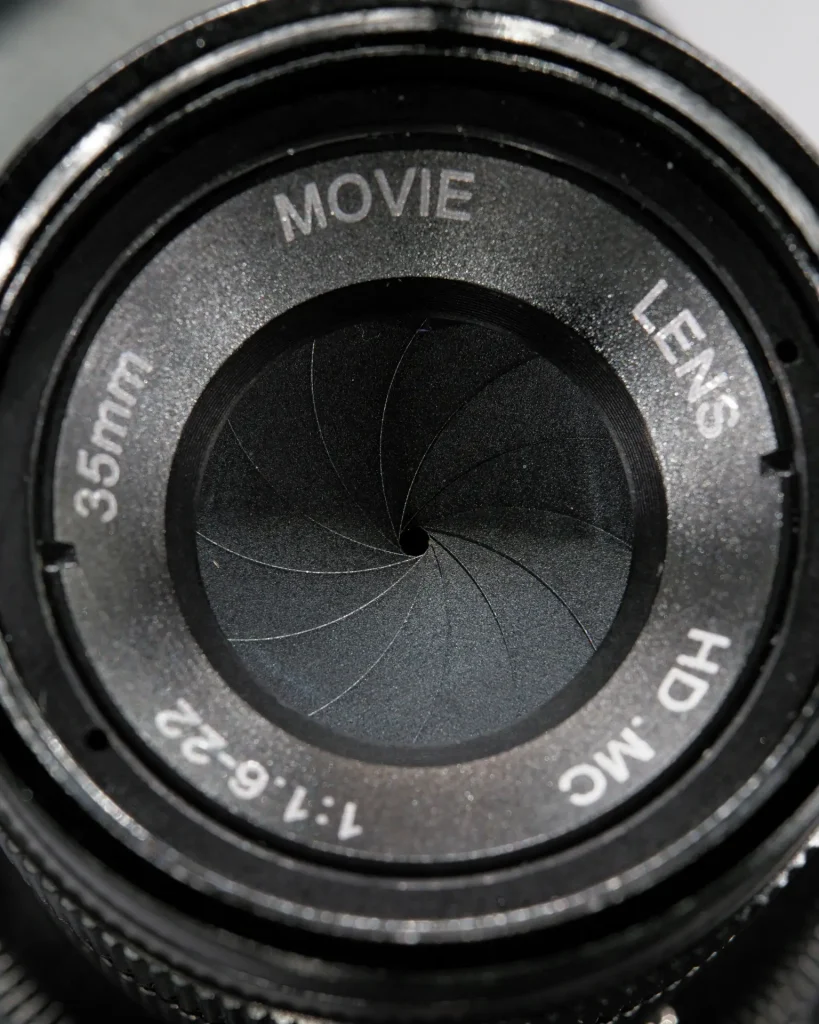
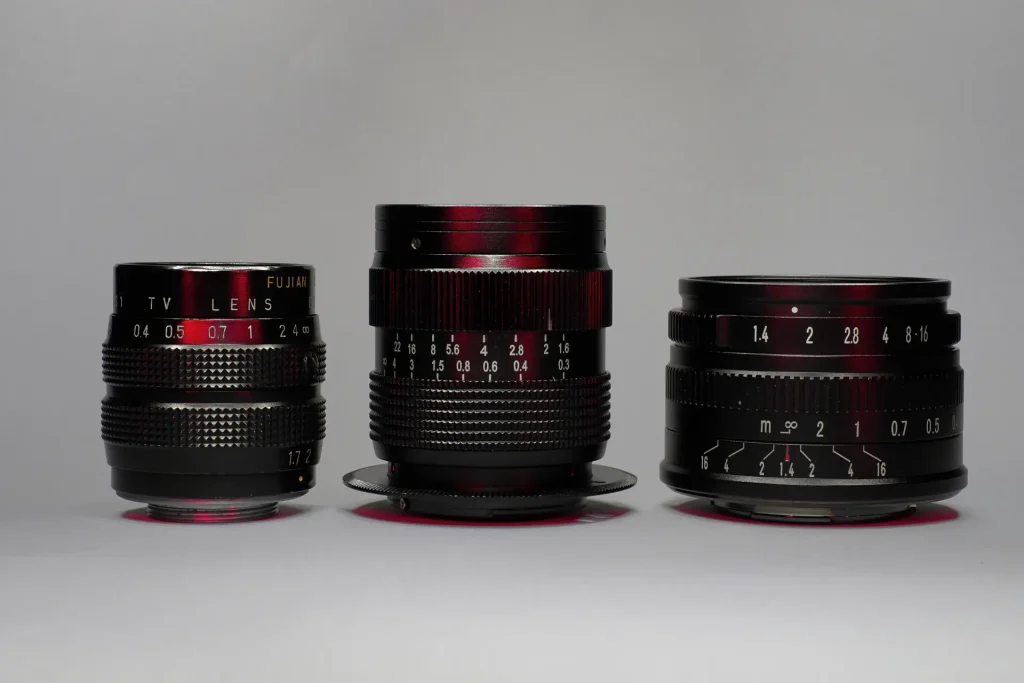
Conclusion
With the recently growing interest into the older digital cameras, as we could see also here at 35MMC, I believe the C-Mount lenses might become popular again. Just pick any older M43 body, add a cheap adapter and any of the many lenses, making for a very fun, small and affordable photography kit. And stop by your local used camera market, maybe you will find some sweet vintage glass that nobody else cares about.
You can follow me on Instagram, to see photos from life in China.
Share this post:
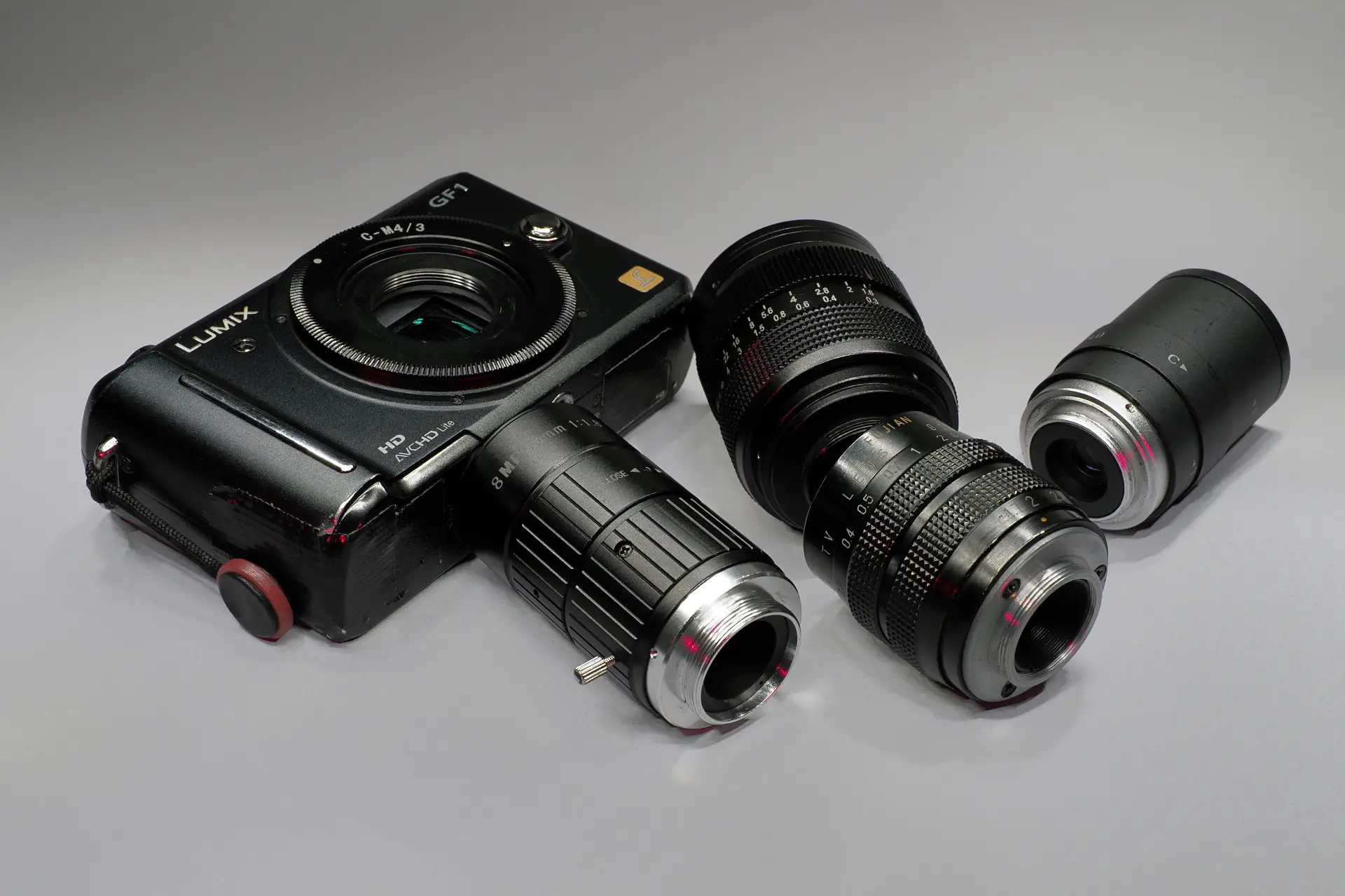








Comments
Case Harris on Fun With C-Mount Lenses on Mirrorless Cameras – By Frankie Bina
Comment posted: 27/04/2022
As I discovered the massive “crop factor” induced by the GoPro’s tiny sensor (“normal” appears to be something well under 10mm in this format) I began to realize the trouble I was having hand-holding these relatively long focal length lenses… You remember “long lenses,” right? Like 20-30mm?! Waist-level holding and tripod use became the norm for this GoPro rig, and GoPro’s own vlogging flip-screen became the perfect tilt-up viewfinder.
At this point, I should probably mention that all of this GoPro use is NOT for video… tiny camera body plus antique lenses and a flip-screen is a whole lotta fun for shooting stills… and now that the GoPro10 has managed to squeeze 23MP out of their tiny sensor, it’s a rig to rival many very modern mirrorless setups.
Comment posted: 27/04/2022
Dan Mountin on Fun With C-Mount Lenses on Mirrorless Cameras – By Frankie Bina
Comment posted: 27/04/2022
1) 10mm f/1.8
2) 25mm f/0.95
3) 75mm f/2.5
I mount them on a Pentax Q. With a crop factor of 5.5,I effectively have a 55mm, a 137.5mm medium tele, and a 412.5mm long telephoto when mounted on the Pentax Q. The longest of the 3, the 75mm is barely 4" long! Where else would you be able to find a 400 mm at 4" long?
Wide open the bokeh the three Angenieux lenses produce is simply amazing! Soft, almost dreamlike. Best of all, I was able to buy all three of them for $125.00. They were mounted on a 16mm Bolex movie camera I bought at a thrift shop. I ended up selling the Bolex on FB Marketplace for $75.00!
My latest purchase to try and experiment with, is a Theia SY125, a 1.3mm f/1.8 in CS mount. Theia has designed their ultra-wide angle lens with a 135degree coverage that is virtually linear vs. round and distorted like fisheyes. Despite the fact that the M25 mount on C and CS mount lenses is identical, the flange distance with CS mount lenses is different - 5mm less - the C-Mount lenses. I'm having a D-Mount adapter modified to accept the M25 threads since the flange distances of CS-Mount and D-Mount lenses is almost identical. Factoring in the crop factor of 5.5, the Theia 1.3mm becomes 7.15mm! I cannot wait to see the results
Comment posted: 27/04/2022
Haardvuur on Fun With C-Mount Lenses on Mirrorless Cameras – By Frankie Bina
Comment posted: 28/04/2022
Comment posted: 28/04/2022